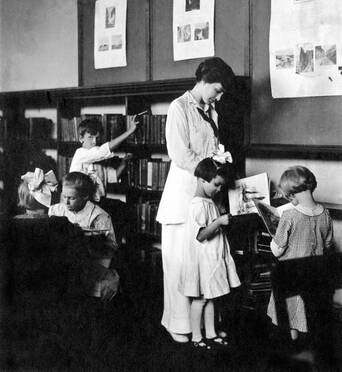 A 1917 photograph of the interior of the ACPL Shawnee Branch on South Wayne Avenue is shown in this archival photo. Credit: ACPL A 1917 photograph of the interior of the ACPL Shawnee Branch on South Wayne Avenue is shown in this archival photo. Credit: ACPL By CJ Woodring National Library Week will be observed April 3-9 with actress/comedienne Molly Shannon serving as this year's honorary chair. The theme is “Connect With Your Library," which promotes the idea that libraries offer patrons opportunities to connect through technology, media, programs and classes, extending education far beyond books. First promoted in 1958, the week-long commemoration is sponsored by the American Library Association (ALA) and observed in libraries throughout the nation by facilities that include school, public, academic and special libraries. Observed on the Tuesday of the week, National Library Workers Day (April 5 this year), honors librarians, support staff and others whose contributions enrich patrons’ lives. Finally, since 1985 America has acknowledged April as School Library Media Month (the name was changed to School Library Month in 2010); National School Librarian Day will be April 4. And while this might appear an unseemly amount of annual observations for one entity, no other public facility is more deserving or more in need of your support. A library is more than a bricks-and-mortar repository of volumes. Whether a historic Carnegie library (166 were constructed in Indiana; Fort Wayne is among less than two dozen cities to have demolished theirs) or a new facility, libraries inject prestige, culture and stability, defining a neighborhood and community. And a nation. But as communities are forced to slash library hours and book budgets –- and in some states are once again being encouraged to ban books –– our nation increasingly is portrayed as one unwilling to commit to these sanctums of learning and empowerment. And our society reflects this. I was blessed to have been born with a silver library card in my hand –– thanks to my maternal grandmother. A first-generation Swedish-American, Nana was forced to quit school after fifth grade when her mother died. As the eldest, her duty was to oversee younger siblings, a number that grew to seven after her father’s remarriage. Yet that remarkable, self-educated woman never stopped reading, never stopped learning. Nana taught me to read when I was four. Aside from an extensive collection of Little Golden Books and classics, my earliest reading material came from the library of the Lutheran elementary school I attended here. Later, I walked or bicycled the six-block journey from home to the Shawnee Branch. Tucked into a corner next to a neighborhood meat market, the tidy brick building introduced me to the world of Little Pear and the Boxcar Children's adventures. As a high school student, I often stopped by the library on my way home, never failing to find the assigned volume, the exact reference, I sought. Throughout the years I developed close ties with our main facility (it boasts, among other things, the nation’s largest library-based genealogy department) and introduced my three sons to the Tecumseh Branch, where they ate green eggs and ham with Dr. Seuss, climbed trees with Christopher Robin and discovered just how the Grinch stole Christmas. When I returned from Florida in 1993 for a brief stay, the first thing I did was apply for a library card at the Shawnee Branch. Relocated to a new, larger building 20 years earlier, it remained as a comfort zone and, for several weeks, a respite for my displaced soul. Along with generations before me, my relationship with libraries remains a lifelong love affair, and I continue to visit the branch, which faces a probable closure, according to the Allen County Public Library's January 2022 "Facilities Master Plan." The plan notes that county population has increased 15% since 2020, and continues to do so, although growth areas are inconsistent. Library branches haven't undertaken significant capital improvements since 2003-2008, and all will be 22 to 25 years old within 10 years, with two approaching 40 years old. Constructed in 1973 and renovated in 2003, the Shawnee Branch currently is adequate for needs; however, the structure is considered in poor condition –– including water seepage and heating/cooling issues –– and with no site room for future growth or expansion. Along with Pontiac, Waynedale, and Hessen Cassel branches, its population is considered "static." Rather than simply removing any one of those libraries, the goal is to "invest in a transformative project that will serve generations to come," according to ACPL statements. During meetings with the Packard Area Planning Alliance (PAPA) and Southwest Area Partnership (SWAP), Susan Baier, executive director of the ACPL, shared information on the Master Plan. Plans for Shawnee Branch include Option A, which entails closing Shawnee and expanding Waynedale and Hessen Cassel branches, and Option B, which consists of closing Shawnee and Hessen Cassel branches and remodeling Waynedale. The latter also calls for a "superbranch" of 30,000 square feet to be built in the city's southeast quadrant. According to the Master Plan, and as it now stands, the final plan will be approved in April. Please visit youracpl.org to download a .pdf of the Facilities Master Plan and/or to contribute comments. A library card offers a window to a special world, a passport to a golden odyssey. It allows, at little or no fee, access to material old and new. It imparts knowledge through magazines, newspapers, periodicals, reference materials, exhibits, informational and instructional videos and an increasing wealth of computer programs. It also affords non-English speakers essential materials, ensuring future readers. Libraries open eyes and unlock minds. Libraries change lives. They create new worlds and broaden existing horizons. And in a world where publications continue to go by the wayside, libraries continue to offer books, the sole medium that remains a “warm fuzzy,” a personal, hands-on, do-it-yourself road map for our lives. Most library funding is raised at local and state levels. And competition for dollars is intense. Please invest in our children’s –– our country’s –– future by investing in your local library, its activities and events. Nowhere else will you receive so much for so little. And enrich your life at the same time. CJ Woodring has been affiliated with the 46807 district since growing up on W. Oakdale Drive. She graduated from South Side High School and reared her sons on Kinnaird Avenue, where she served as a former HSWNA newsletter editor. She has lived in –– and loved — historic places and spaces for more than 30 years. She currently resides in her sixth historic home. 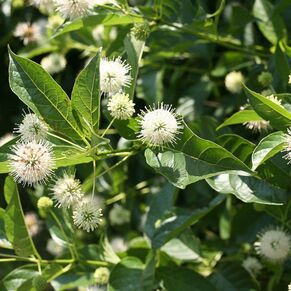 Buttonbush Buttonbush By Simon May With Spring right around the corner, many of our neighbors with a green thumb are excited to start planning their gardens for the fair weather seasons. An important part of landscaping is incorporating native plants to ensure that pollinators, birds, and “good bugs” are welcome in our area. Many people are familiar with the Indiana native purple cone flower, yellow black-eyed susan, and blue Siberian iris, but here are some not-as-well-known options that are easy to grow in the Indiana climate. Aromatic Aster: This showy, mounding perennial is a great option for dry areas of your landscape with rocky or sandy soil that drains well where you want to add a pop of late summer or early fall color that will keep the bees fed as the weather turns. After the summer blooms are spent, this blanket of rigid stems springs to life with pink to lavender-blue many-petaled flowers with an aromatic yellow center. Since the flowered stems can grow too tall (10-20”) and heavy for their own good, they may open up or fall into a less desirable shape, so a peony cage may be used or simply keep the mound thick by pruning it back by no more than half in June. This plant does spread by stolons or runner roots, so thin it regularly to control the size of the mound. Cardinal Flower: This perennial is for the hummingbird lovers as they are the primary pollinators of this plant along with butterflies. Cardinal Flower may be grown in full sun to shade, but moisture is a must as they cannot tolerate drought, so if planting in sun anticipate mulching and frequent watering. The showy red blooms that can rise 3-6’ tall are named after the bright red robes worn by Roman Catholic cardinals, not the state bird. This plant propagates by seed which can be collected at the end of the season for refrigeration, or the seed heads can be cut off to control spreading. Shooting Star: This distinctively flowering plant is among the likes of bleeding hearts or columbine in my book, something that looks strange and will make people ask “What is that?” The shooting star plant is a woodland species (part shade) that has been cultivated and become commercially available, benefitting bees and other pollinators. The leafless flower stalk arises 6-20” from a cluster of bright-green leaves. At the top, the stalk divides into arching branches, each terminating in a downward nodding flower with strongly-backward pointing white or deep pink petals forming star patterns in a cluster. Truly and unusually beautiful, these add a pop of early summer color to a shady area with moist rocky or sandy soil. Best propagated by division, similar to hostas. Common Buttonbush: This perennial shrub is a shade or part shade loving plant that can spread and grow up to 6-12 feet after several seasons, so give it some room. It can also be trained into a tree shape. Great for a wet area of your landscape that does not drain well, this shrub loves to have its feet wet and it’s leaves cool. The long-lasting, distinctive blossoms are usually white or pale pink with a fringe of pistils protruding out that resemble a pin cushion and attract butterflies, nectar bees, and birds in the fall who will eat the persisting nutlets within the blossom. Clematis Virginiana: This perennial climbing vine is very versatile as it can thrive in full sun to part shade on trellises or along fences. Most clematis are prized for their large flat flowers, but this clematis, also known as the Virgin’s Bower, produces small clusters of delicate white flowers that attract bees and other pollinators. This variety is also unusual because it blooms in the late summer or early fall. In the late fall, the flowers will transition to seed heads that look like beautiful swirling clouds. These are easily removed if you’re worried about spreading. It is important to purchase this plant from a greenhouse and not source it naturally since there are some invasive varieties. If you try any of these plants in your garden, please send pictures to the Historic South Wayne Neighborhood Association Facebook page for us to share. Happy gardening! Simon May has lived much of his life in the '07 and currently resides on Kinnaird with his husband, Richard, and their four dogs. He is a lifelong gardening hobbyist, by no means an expert, whose love of plants, flowers, and the outdoors was fostered by his master-gardener mother and his father who came from a family of farmers. By CJ Woodring Illustration by Ben Swygart Fort Wayne has carved a niche among Indiana cities since its 1794 establishment, acquiring designations including “Summit City,” “Magnet Wire Capital of the World,” “City of Churches,” and “The City That Saved Itself.” We’ve also been designated a “Tree City” and several times were cited as an “All-American City,” most recently in 2021. Thus, I was excited when I spotted a WANE-TV online article in January: Greater Fort Wayne, Inc., supported by Mayor Tom Henry and other city leaders, has joined forces in creating a 10-year economic development plan with goals that include recognition as a “Top 10 Music City” by the end of 2023. This will include “expanded festivals, music venues, training and education and music-industry innovation,” according to the article. While Fort Wayne’s current musicians and performers most often are acknowledged, little has been mentioned, thus far, of the music history that led us here. And which we’re partially recalling in several newsletters, noting both commercial endeavors and individual efforts and accomplishments. INITIAL CONTRIBUTIONS TO INDIANA’S MUSIC HISTORY Moreso than any other art form, music unites people. Thus, while acknowledging music is a universal language that conveys happiness and joy, it is also a globally recognized anchor when times are bad: global chaos and war, community violence, the Great Depression, pandemics such as COVID-19. In these shared times of collective misery and woe, music offers hope and, to many, a reason for living. Individuals have been known to spend their last dime on a form of music: Nourishing one’s soul is often more important than feeding one’s belly. No stranger to music in any form, or forum, the Hoosier State has been associated with music since at least the early 1900s, when Elkhart earned distinction as “Band Capital of the World.” Although instruments were produced in various Hoosier cities at the beginning of the nineteenth century, more than 60 manufacturers were at one time based in the City with a Heart. One of Fort Wayne’s first, and perhaps most notable, foray into music lauded an instrument: the Packard piano. Isaac Packard and associates relocated to Fort Wayne from Chicago following the 1871 Great Chicago Fire. They established the Fort Wayne Organ Company the following year. In 1899 the name officially was changed to The Packard Company and, in 1915, to The Packard Piano Company. Located on Fairfield Avenue, the company was a go-to for musicians in the market for parlor pianos as well as orchestral organs that graced venues including the Emboyd Theater. The company went into receivership after the 1929 stock market crash. In 1937, the city of Fort Wayne acquired the property, tore down the buildings and created Packard Park in its place. (See packardorgan.com.) In the interim, local General Electric employees, whose former campus currently is undergoing adaptive reuse as Electric Works, enjoyed making music, entertaining not only coworkers but city residents. According to author Clovis E. Linkous’ 1994 book, “General Electric at Fort Wayne, Indiana: A 110-Year History,” the Electro-Technic Club Band first entertained in February 1910 at an ETC roller skating party. The group later held Thursday noon luncheon concerts in McCulloch Park, formerly known as G.E. Park. In the spring of 1925, the Male Glee Club was organized, followed five years later by construction of a new bandstand in the park. A 25-member Male Chorus was introduced in 1935 and performed that fall for the Parent-Teachers Organization at Nebraska School. The last group of GE music makers was a 36-piece band organized in 1937. Linkous suggests that World War II “probably disrupted the musical organizations” at the Fort Wayne plant. More recently, in June 2009 the City renovated the 1930 bandstand on the four-acre green space, adding a musically-themed playground with fanciful instruments that make different sounds, allowing children to create their own music. The City’s Parks & Recreation Department, Broadway Corridor merchants, businesses, organizations and others celebrated the rededication during the first Broadway Family FunFest, which featured the Fort Wayne Area Community Band, formed about 40 years ago. Read Part II Here. CJ Woodring has been affiliated with the 46807 district since growing up on W. Oakdale Drive. She graduated from South Side High School and reared her sons on Kinnaird Avenue, where she served as a former HSWNA newsletter editor. She has lived in –– and loved — historic places and spaces for more than 30 years. She currently resides in her sixth historic home. |
Archives
May 2024
|

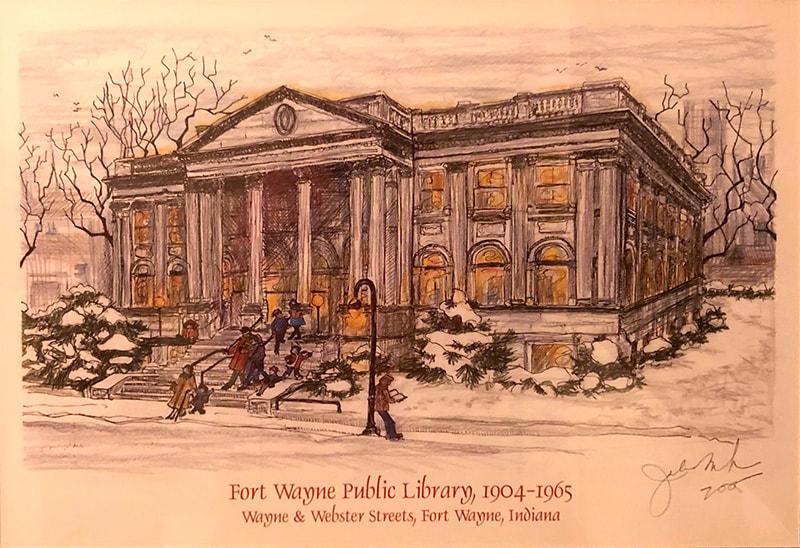


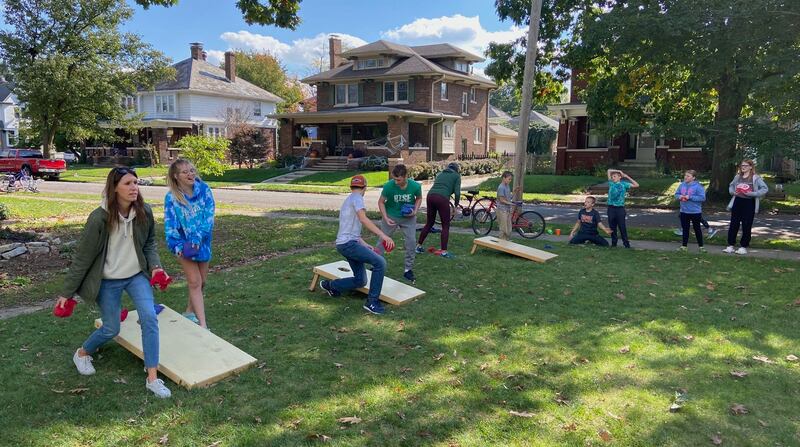
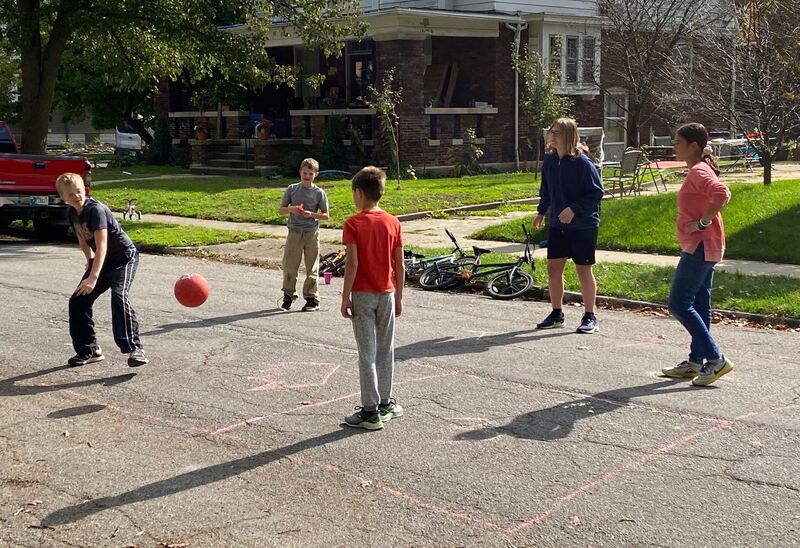
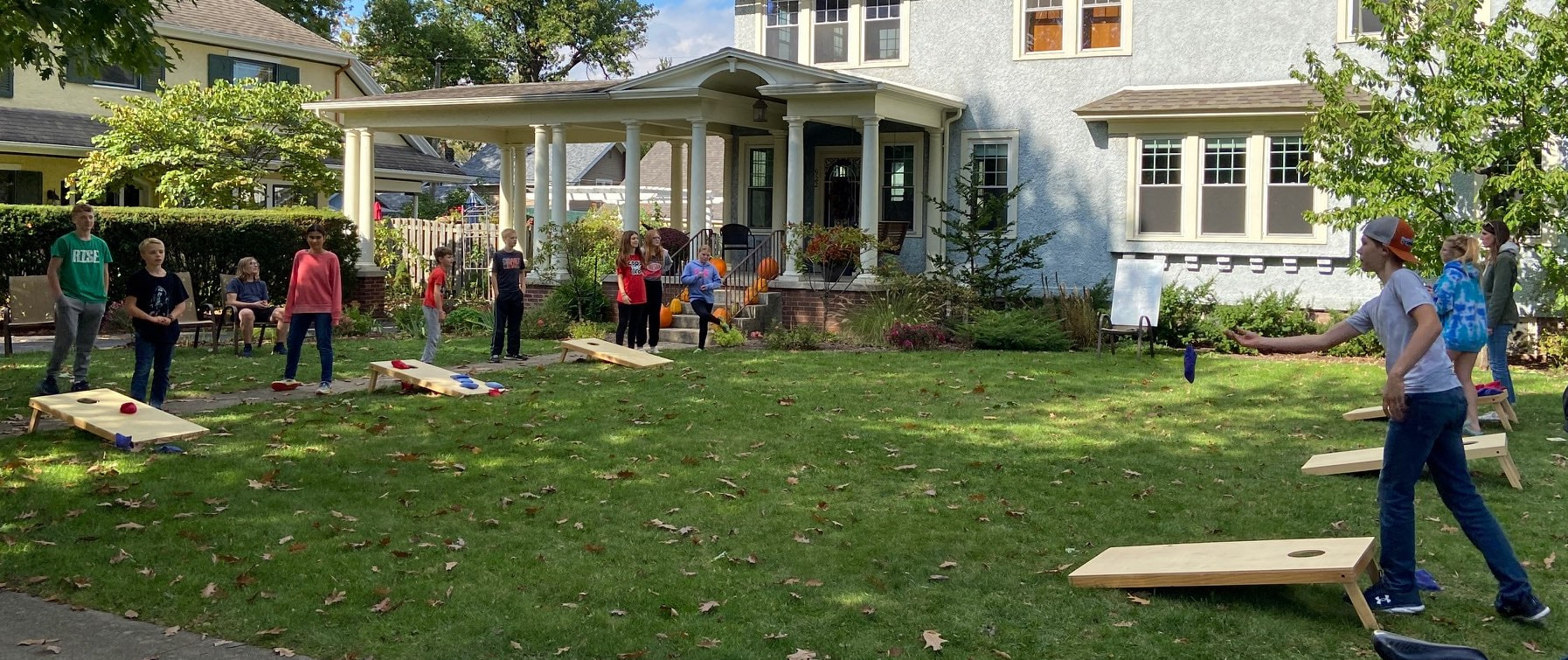
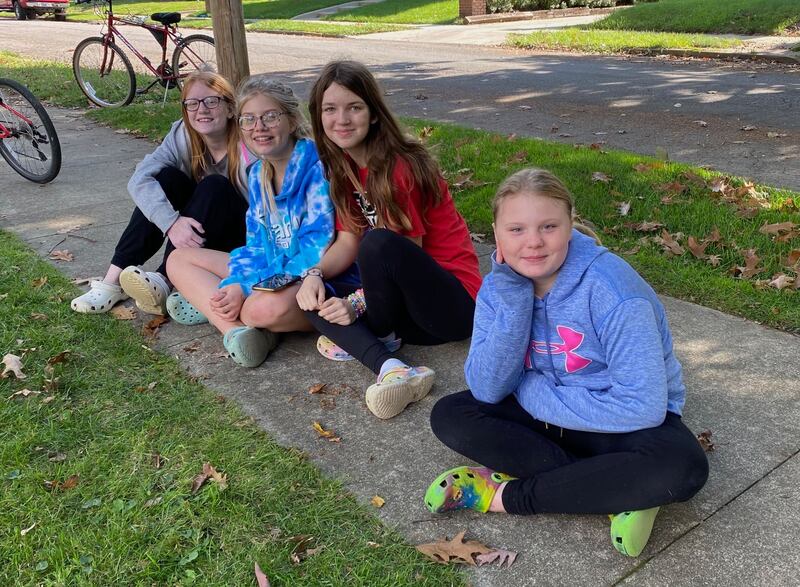

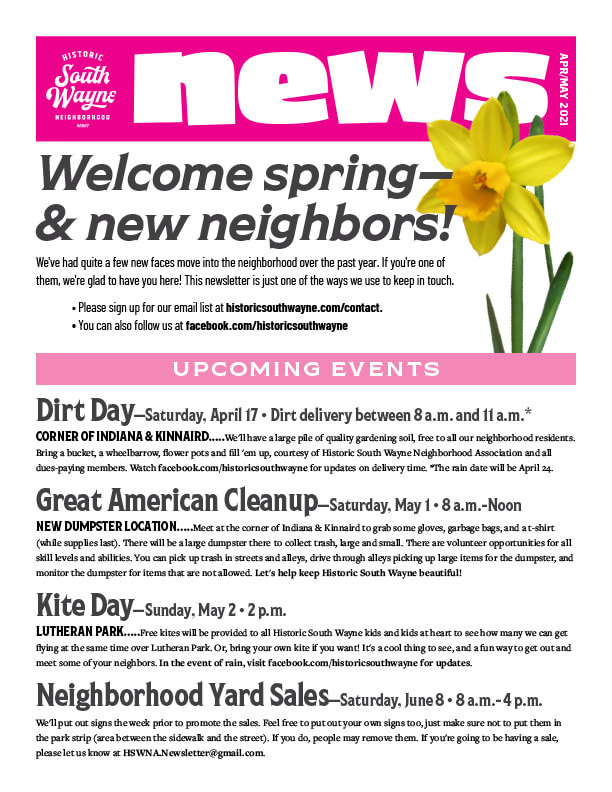
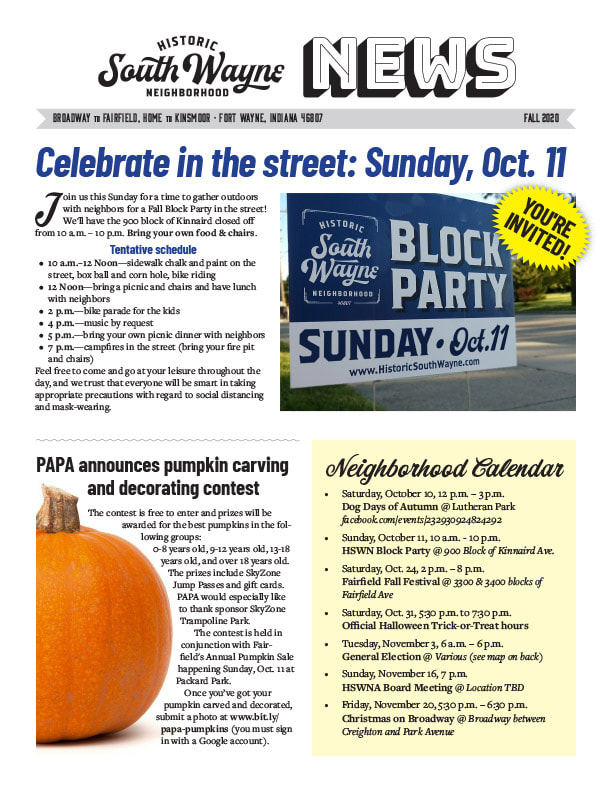
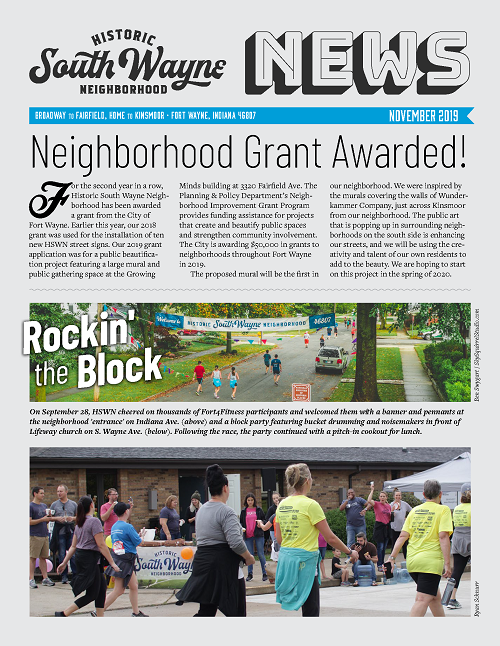
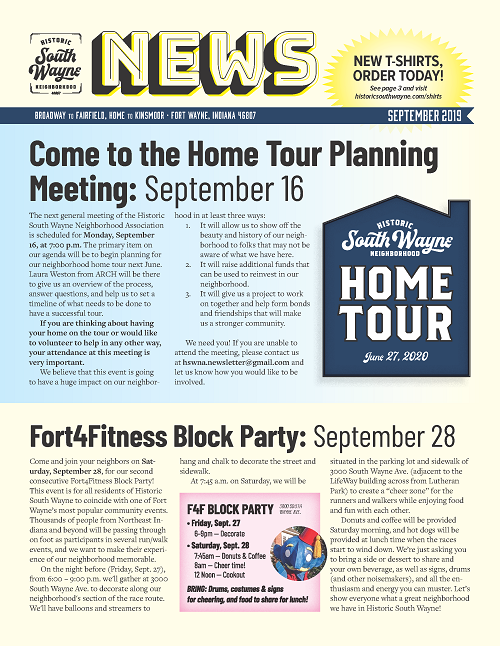
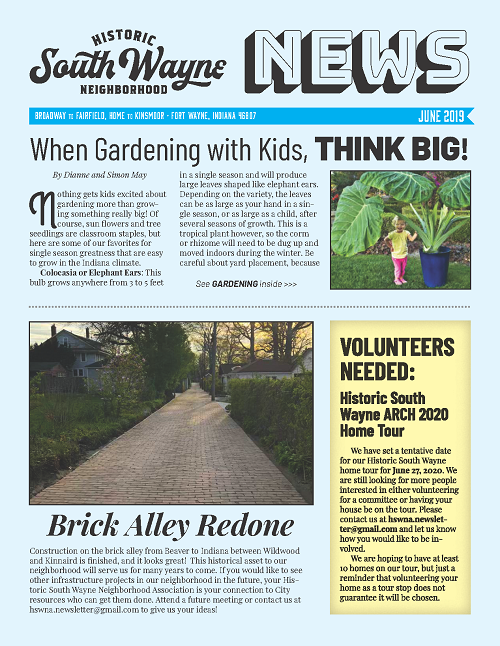
 RSS Feed
RSS Feed
